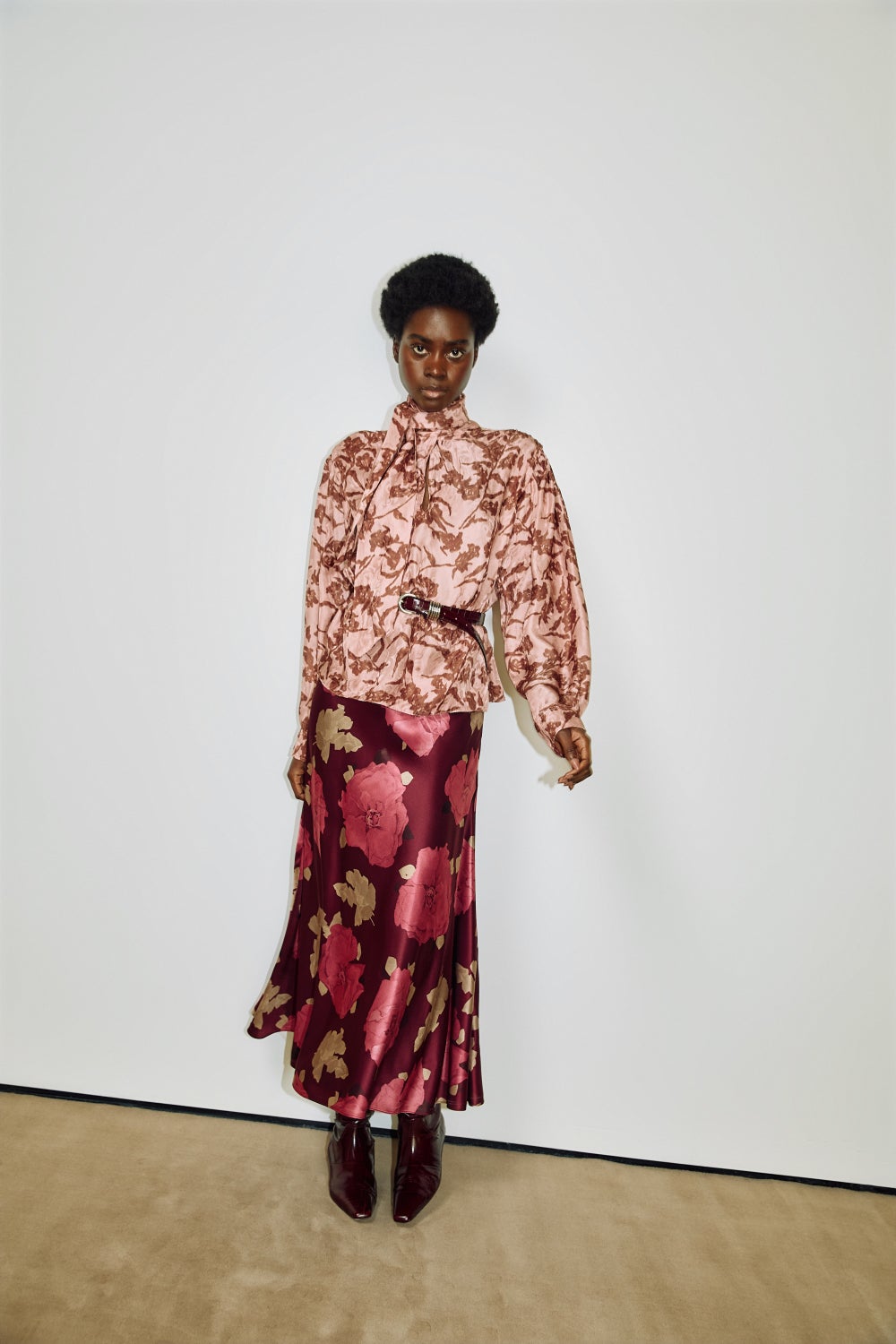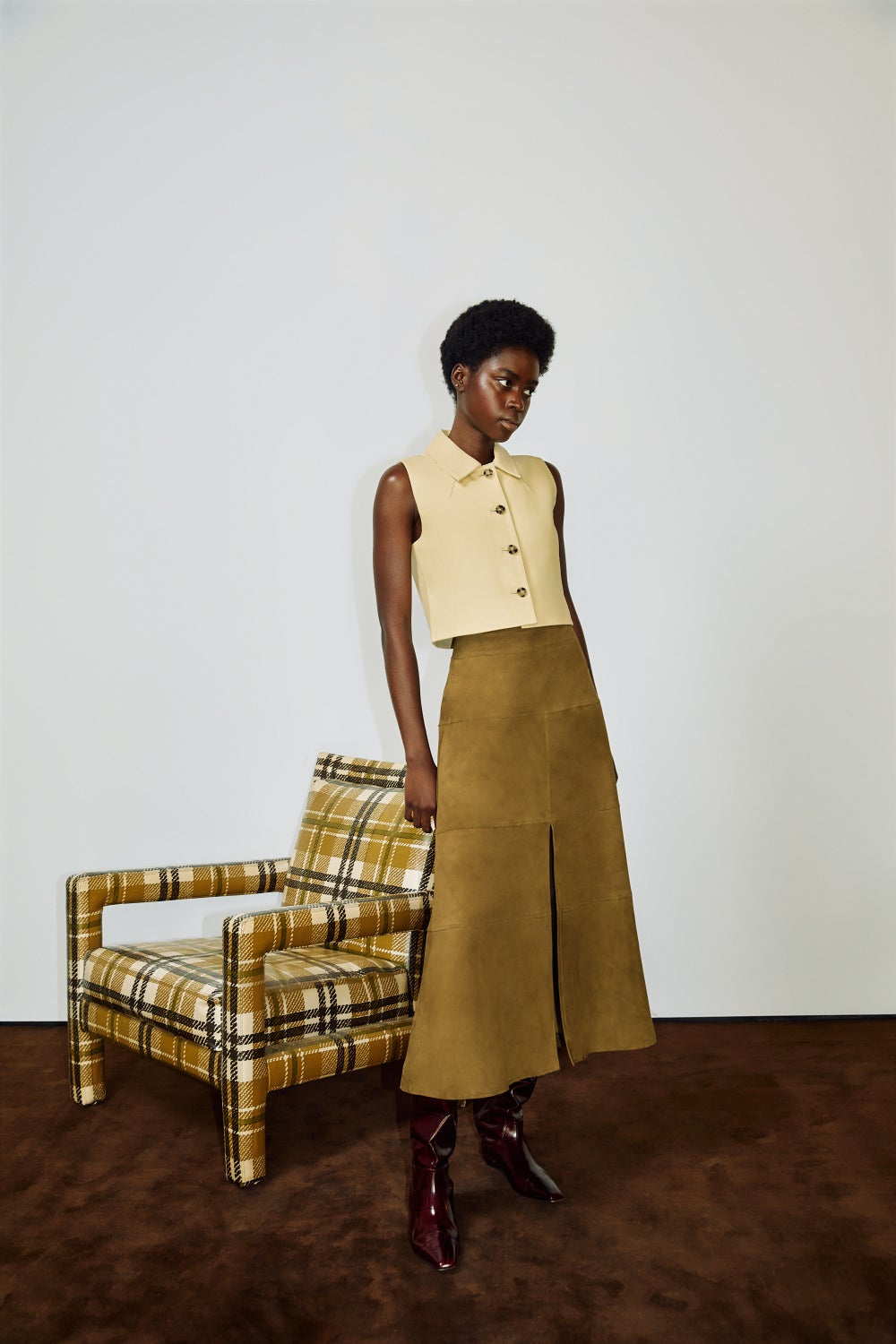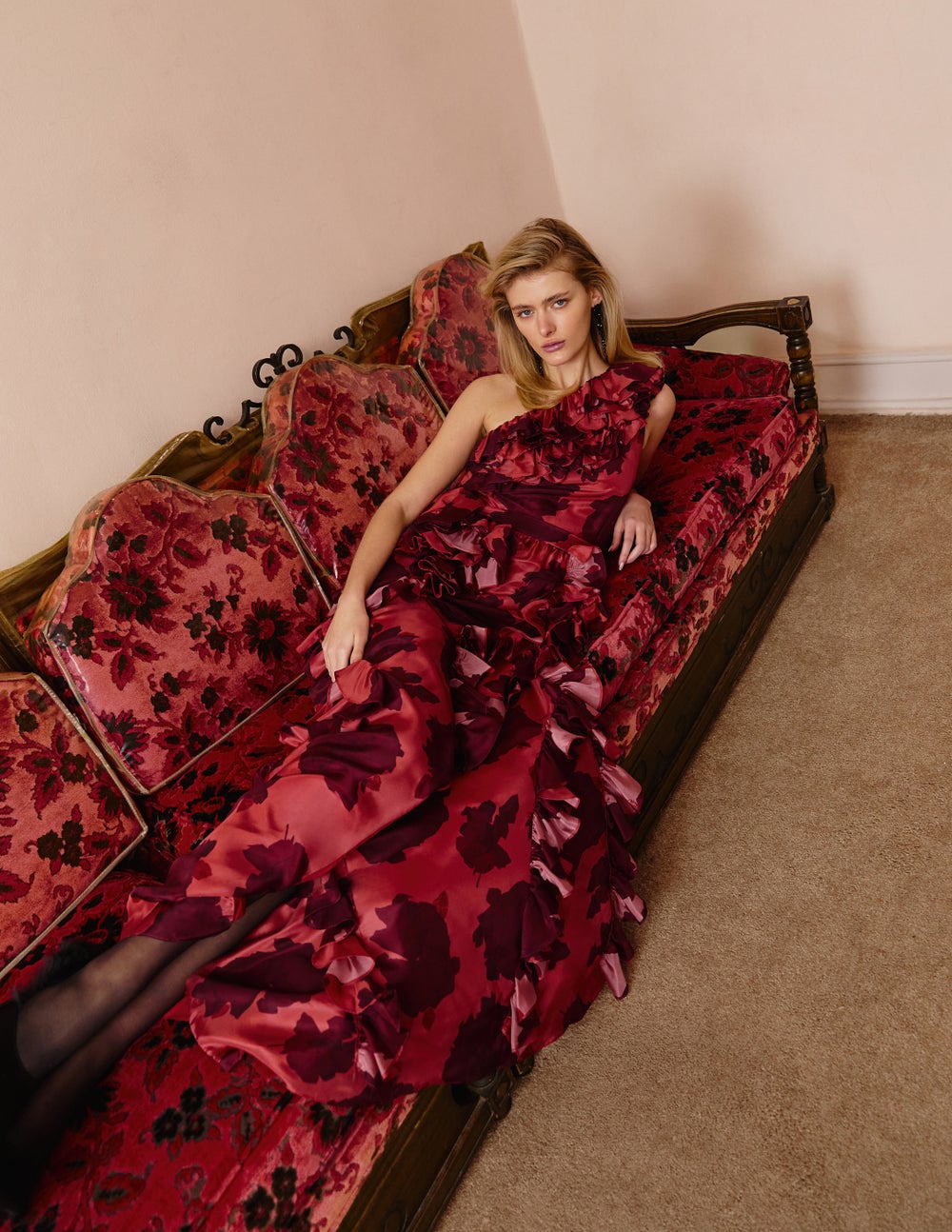Growing up in Toronto, Canada, Tanya Taylor, now founder of her namesake womenswear brand and a second eveningwear brand, Delphine, didn’t really know she could build a career in fashion, she says. However, as someone from a “very entrepreneurial” family, she’d always dreamed of running her own business.
Image Credit: Courtesy of Tanya Taylor. Tanya Taylor.
“ I took for granted that our dinner table conversations were always about small businesses, the people you work with, the values you have in your work and how rewarding it is when you can build a company,” Taylor says.
That foundation led her to study finance at McGill University, but Taylor couldn’t shake the “creative itch” she felt to join the fashion world. So Taylor moved to New York City, where she didn’t know anyone at the time, and applied to the Parsons AAS Fashion Design program — after which her “whole world changed.”
Taylor went on to work for Mary-Kate and Ashley Olsen on their contemporary lifestyle brand, Elizabeth and James, for several years.
“ What I found so inspiring, and what I still like to think about today, is how personal they were with their design process,” Taylor recalls, “and how working for a female founder that was creating product for a customer that they could really relate to, whether through age or just lifestyle, felt fun. We weren’t guessing who this person was. It wasn’t fantasy; it was grounded in reality.”
 Image Credit: Courtesy of Tanya Taylor
Image Credit: Courtesy of Tanya Taylor
Taylor decided to marry what she’d learned in business school with her growing experience in the fashion industry. She recognized a gap in the market for an “expressive, inclusive, joyful brand” that felt as though it was designed by someone who wanted to be close to the customer.
Although Taylor admits she was “naive” when she made the leap to fashion founder, her commitment to starting a company that would be “adaptive to the market” paid off. Taylor’s namesake brand grew from one employee in 2012 to a team of about 40 people today. The brand saw $25 million gross revenue last year, and net sales growth surpassed 40%.
“ I wanted to bring a different pace and give myself a different creative playground.”
Last year, Taylor also branched into eveningwear with the launch of her second brand, Delphine.
“ I wanted to bring a different pace and give myself a different creative playground that represented a different side of my friends, of myself and what I saw missing in the market,” Taylor says. “I’m 39, and I was having a very hard time finding dresses to go to all of the events I have in my life that weren’t either too young or too sexy. I was missing the sleek sophistication that I used to be able to find.”
 Image Credit: Courtesy of Delphine
Image Credit: Courtesy of Delphine
Of course, the decade-plus between the roll-out of Taylor’s first and second brands has seen significant changes in the fashion business.
Entrepreneur sat down with Taylor to learn more about how building her first brand and adapting to industry shifts have shaped her ongoing growth strategy and new brand, Delphine.
1. Retail remains valuable amid the shifting landscape
As a young designer without a network in New York, Taylor staged an attention-grabbing Fashion Week show in the MoMA’s Agnes Gund Lobby with “kooky” details — like bartenders with serving trays carrying goldfish swimming in glasses alongside regular drinks — to create a “magical, surprising little world.”
Wholesale was the way to launch when Taylor started her first brand, and the MoMA show got her in the door successfully. Saks Fifth Avenue expressed interest, noting “the longevity” of Taylor’s ideas and how the brand didn’t feel like one “chasing trends.” Saks became Taylor’s first retailer, and Bergdorf Goodman followed soon after.
Many businesses have had to contend with a decline in physical retail over the past decade-plus. However, brick-and-mortar stores are seeing a resurgence, and luxury brands increasingly invest in flagship stores, Vogue Business reported in 2022. In 2023, Tanya Taylor opened its first flagship store on Madison Avenue in New York City. The store was profitable in its first year and boasts a 40% customer return rate.
Taylor looks forward to leaning into her company’s flagship presence.
“That’s where retail’s exciting to me,” the founder says. “We get more chances to [connect with] people. Every day at 6:30 p.m., we get this novel from our store about every person who walked in: a little story about where they’re from, why they decided on what they bought or didn’t, what’s going on with their sister. It’s so interesting to feel personally attached to the people you designed for. That is what fuels me and feels like the future of both brands.”
 Image Credit: Courtesy of Tanya Taylor
Image Credit: Courtesy of Tanya Taylor
2. Self-funding continues to give Taylor’s brands an edge
Taylor’s first brand was self-funded and remains so; she’s currently making the same move with Delphine.
Although challenging at times, self-funding allows Taylor to invest in herself and her team fully and provides the flexibility to put brand values first and consider long-term wins over short-term gains, the founder says.
Additionally, self-funding prevents the brands from adopting a “private equity-backed voice.” That’s particularly important given their distinct personas — the first brand’s “happy,” “approachable” ethos versus the second’s “emotionally driven, more mischievous” vibe.
Despite the differences between the two brands, Taylor approaches both of their voices and marketing strategies with a similar “zest,” which she says is the key to connecting with customers and putting them first always.
3. Direct engagement with customers means more opportunities
The rise of direct-to-consumer marketing translates to a new opportunity to “own the relationship with the customer,” Taylor says.
Delphine does work with some “incredible retailers,” but the brand’s presence online and in the Madison Avenue store serves as a chance to “go back to the basics” and ask important questions: How do I get close to the customer? How do I excite her?
Social media, naturally, is another means to that end. Influencer marketing didn’t exist when Tanya Taylor launched; now, it’s often a customer’s first touchpoint with a brand.
“ That feels like a huge shift in the industry,” Taylor says. “You’re not staring at a model in a studio showing you how you put a sweater with a skirt. You’re getting to see it on somebody running to work, what shoes they’re wearing and how their life looks. That has put the customer so much more in the center of fashion, in a way that is well-aligned with how I like to design.”
Additionally, social media, especially Instagram, allows Taylor to interact with customers more than ever before — and she embraces that by responding to many DMs herself. “ I’m asking people questions,” Taylor says. “I am so excited about quick learning. I love crowdsourcing opinions, and as a designer who is like a sponge, it’s been so rewarding to see that access change.”
 Image Credit: Courtesy of Delphine
Image Credit: Courtesy of Delphine
As a two-time fashion founder in an era when ecommerce and social media have completely transformed the industry, Taylor has some helpful advice for any entrepreneur who hopes to succeed in the business: Figure out what makes you distinctive, and surround yourself with people who believe in that distinction, whether professors, industry professionals or friends.
“ That was really, really important for me,” Taylor says. “[It] helped me feel some confidence. Entrepreneurship is a mind game. Once you embark on it, lots of people love it and want to continue, but you have to find ways to keep yourself strong and your creativity strong, and that’s through community.”
This article is part of our ongoing Women Entrepreneur® series highlighting the stories, challenges and triumphs of running a business as a woman.
